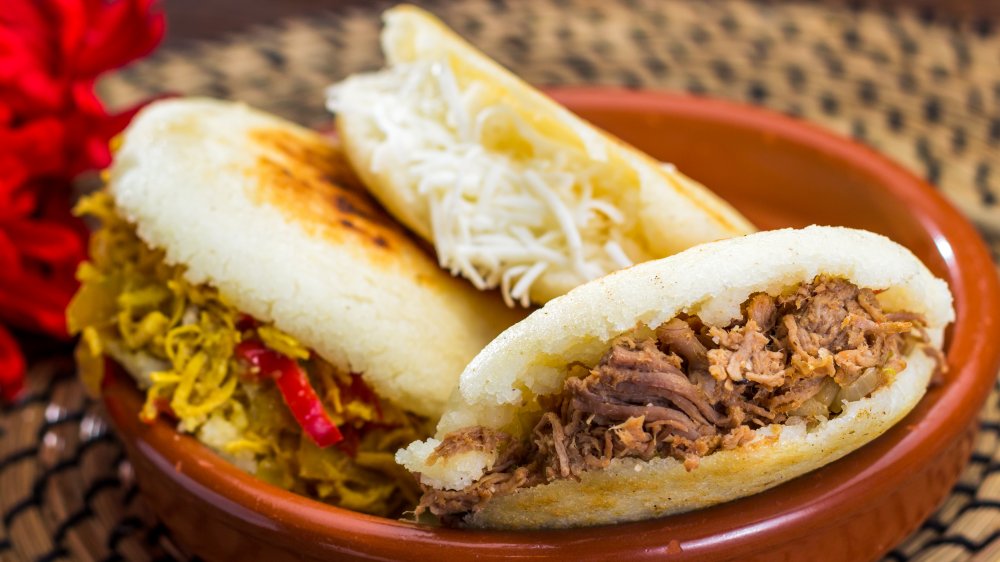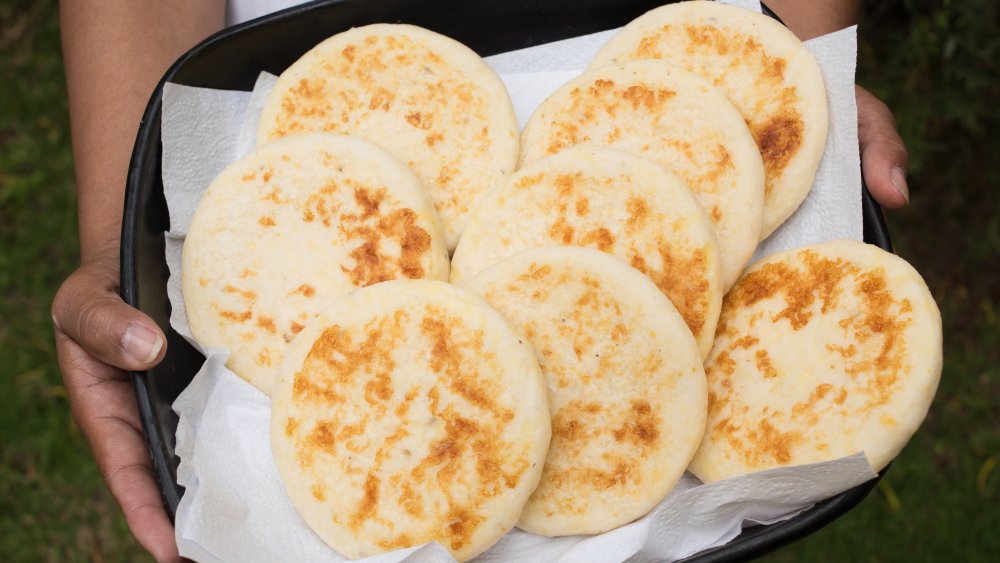The Real Difference Between Venezuelan And Colombian Arepas
The Chicago Tribune describes arepas as thick, griddled pancakes made of cornflour that are split open and stuffed with fillings such as braised meat or cheese to form a sandwich. Arepas are popular all throughout Latin America, according to Matador Network, but have a particular place in the hearts of Venezuelans and Colombians, where the food originated.
Arepas were a staple food of the Timoto-Cuica people, a pre-Colombian civilization who lived in the Andes mountain range near what is present-day Venezuela. They are known to have been expert farmers, with advanced irrigation techniques that allowed them to grow many crops where they lived.
The Timoto-Cuica made their arepas with ground corn formed into a cake and cooked in a pan called an aripo, which is where many believe the name arepa is derived from. When the Spanish came, they took a liking to the arepa and brought it with them to other areas in Latin America as they moved south. Eventually, parts of the continent gained their independence from Spain, creating Gran Colombia, which eventually split into the countries that are present-day Colombia, Venezuela, Ecuador, and Panama.
There are two big differences between each type of arepas
The Latin American Post says the main difference between Colombian arepas and Venezuelan arepas are the ingredients. Venezuelan arepas tend to come with many fillings and options, while the arepa in Colombia is generally only stuffed with cheese or egg. Since the recipe is so old, with the ancient people who originally cooked the dish dating back 3000 years, there are a large number of varieties of preparations in each country. Carols Gaviria, a chef and teacher at La Sabana University, told the Latin American Post there are at least 55 types of arepa in Colombia, and 42 in Venezuela.
Matador Network goes a little further in detail with the differences between the two countries' preparations, stating that the corn cake used in the Colombian arepa is a little thinner and sweeter than its Venezuelan counterpart. When Colombians do add more ingredients than the standard cheese to their arepas, they tend to treat it as a flatbread and pile the ingredients on top, rather than splitting the corn cake open, as is the case with Venezuelan arepas.

